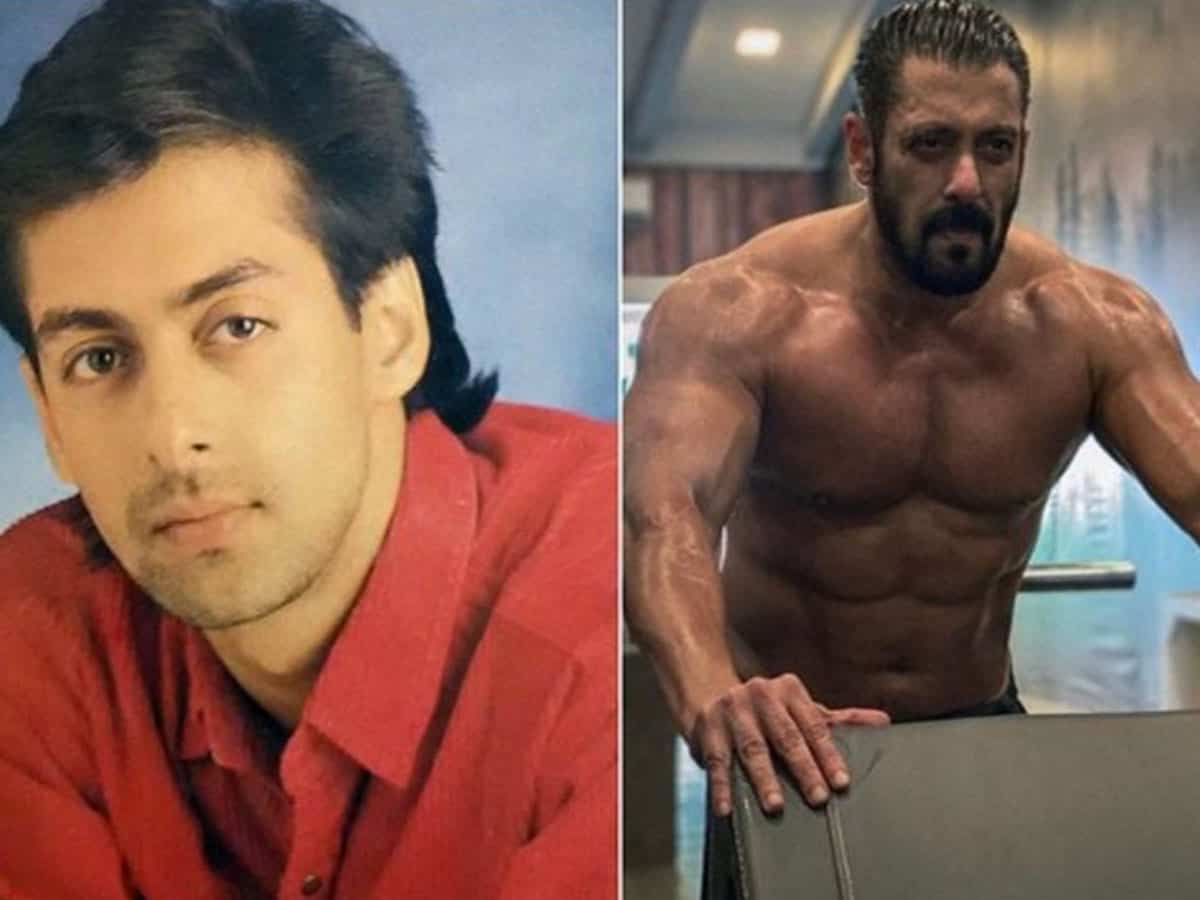New Delhi: Bollywood’s Bhaijaan Salman Khan, who turned 56 on Monday, is considered among the biggest names of the Indian film industry today, as his charisma is more than enough to pull audiences into cinemas.
A movie is often guaranteed to be a hit when Salman’s name is attached to the project because the mass appeal is his USP and he makes the most of it. Such is the following enjoyed by the star that when he flexes his bulging muscles on the silver screen, fans are even ready to let logic take a backseat.
The action-induced spectacles, audience-friendly wisecracks, dancey tracks, slick camerawork and above all, superhero-style fireworks have all come to be associated over the years with the Sallu formula.
Basically, Salman is all about swag and millions of viewers seem to just love it.
However, it was not the same all along. Before blowing up cars in ‘Race 3’ or beating up the bad guys in ‘Radhe’ his onscreen persona was that of Prem, the ideal traditional family-oriented guy. So let’s take a look back at his evolution in films over the years.
Today Salman is a God-level action star but in the ’90s, this territory was majorly dominated by Akshay Kumar, Suniel Shetty, Ajay Devgn. In fact, all the Khans had started out as loverboys, endearing themselves to the 90s audiences with their breezy earnestness.
Salman made his official debut as a supporting actor in the 1988 film ‘Biwi Ho To Aisi’. Then 23, he had played the hero’s brother in a female-oriented subject. However, this project was not his official launch pad.
On birthday-eve, Salman Khan bitten by non-poisonous snake
His first leading role in Bollywood was Sooraj R Barjatya’s 1989 romantic family drama ‘Maine Pyaar Kiya’ which went on to become one of the highest-grossing films that year. It was dubbed in English and Spanish which was a rare thing for Bollywood and it was in international markets where it performed pretty well.
Later in 1991, Salman worked in three moderately successful films like ‘Patthar Ke Phool’, ‘Sanam Bewafa’, and ‘Kurbaan’. Subsequently, he worked with Sanjay Dutt and Madhuri Dixit in ‘Saajan’, which was a big success. In 1994, he was seen in Rajkumar Santoshi’s ‘Andaaz Apna Apna’ which failed to impress audiences at the time of release; however, over the years has gained cult status.
Cut to ‘Pyaar Kiya Toh Darna Kya’, and Salman was at his best in ‘Oh Oh Jaane Jaana’, though he went shirtless to show off a chiselled physique-in-the-making. In the coming years, the bare body avatar would become another of Salman’s draws, kind of like a desi Arnold-Stallone mashup.
From the early ’90s to the later part of the decade much had changed for Salman. He had worked in one of the biggest Hindi hits, ‘Hum Aapke Hain Koun..!’, which cemented him as the product of the virtuous Barjatya clan. The Salman of this decade had a shy charm about him and he maintained that note of innocence well throughout before assuming the mantle of ‘Bollywood’s bad boy,’ for which he is currently known.
As the ’90s came to an end, things in Hindi cinema got majorly reshuffled. It was a tectonic change and Salman took time to settle in the new landscape of Bollywood. Films like ‘Tumko Na Bhool Paayenge’, ‘Yeh Hai Jalwa’, ‘Kyon Ki…’, ‘Lucky: No Time for Love’ and ‘Marigold’ made people think that he wasn’t a pro at career management, unlike other Khans who were sharp enough to cash in on their market value during the rise of the multiplex era.
Though hugely popular, even during his worst phase when he was in and out of jail (the hit-and-run and blackbuck poaching case) somehow his films never matched up to his off-screen legend. During this time Salman’s biggest game-changer was ‘Tere Naam’ in 2003, where he played the role of Radhe Mohan, a tortured lover. ‘Mujhse Shaadi Karogi’ (2004) and ‘No Entry’ (2005) also made good box office collections, though both these films were multi-starrers.
2009 is the year which is considered to be a turning point in his career because this is when ‘Wanted’ released, establishing Salman as the out and out action star of the country. Though he had a few films that didn’t work like ‘Veer’ and ‘London Dreams’ but his position was ultimately cemented at the top with ‘Dabangg’ in 2010.
The film was a fun romp, it gave Salman fans something to throw money at and just about enough to keep the critics glued. His portrayal of badass supercop Chulbul Pandey topped the charts, officially commencing his lucky streak of blockbuster releases.
The actor soared on with the subsequent ‘Dabangg’ franchise along with ‘Ek Tha Tiger’, ‘Sultan’, ‘Race 3’ and several others. His machismo and celluloid heroism worked with his mostly male mass audience base. Salman had come a long way from the time when women audiences used to love their Prem.
What also worked extremely well for Salman were the one-liners like ‘Dil mein aata hoon samajh mein nahin’, ‘Ek baar jo maine commitment kar di’, ‘Mujh par ek ehsaan karna ki mujh par koi ehsaan na karna’, amongst a slew of others.
In the past years, Salman has done films like ‘Bajrangi Bhaijaan’ and ‘Tubelight’ which can be considered as divergent from his usual filmography, however one thing that can’t be foreshadowed is the frenzy he generates amongst his cult-like followers whenever a Salman Khan movie is about to be out.
With films like ‘Tiger 3’ along with the ‘Bajrangi Bhaijaan’ sequel already in place, here’s wishing many more years of unending success to one of the biggest commercial action stars that the Indian film industry has ever witnessed since its inception.







